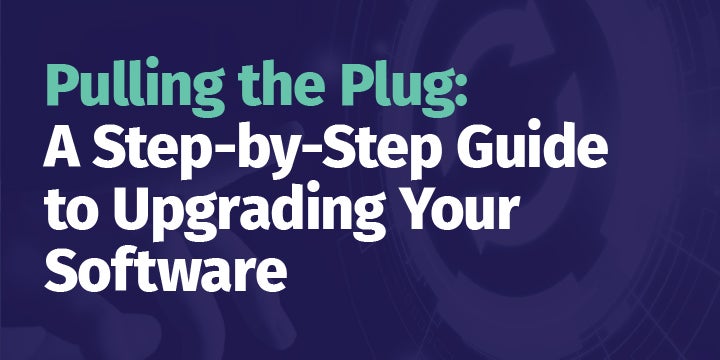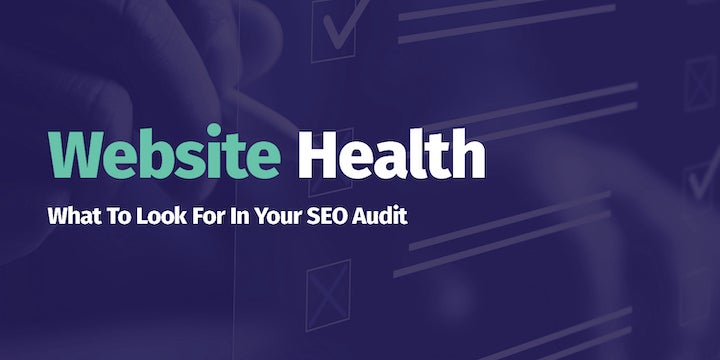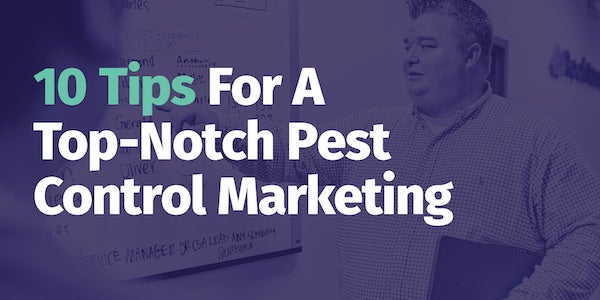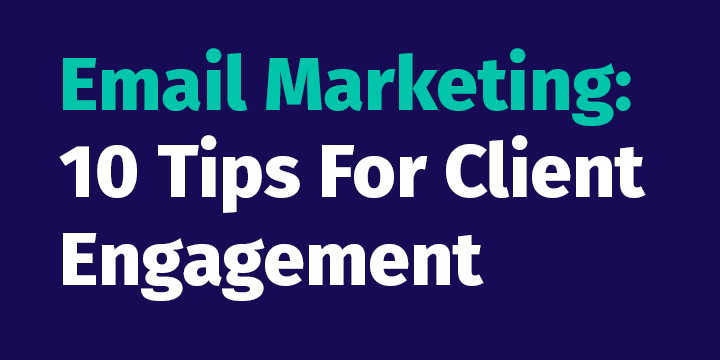Reaching Your Sales And Marketing Goals For Your Field Service Business

Whether in life or business, we all have a certain level of ambition. The best way to achieve those ambitions is through effective goal setting. Having goals keeps you focused and gives you a road map of what you need to accomplish. This guide will discuss how to set your sales and marketing goals and how to reach your objectives through key performance indicators (KPIs).
If you’ve ever watched a professional soccer game, you’ve heard the commentator scream, “GOAL!!!!!!” At this point, the stadium and television viewers know that something significant has been accomplished. When you and your sales team set and meet goals, something significant has been accomplished as well. With so many things pushing against your business, goals help keep you moving in the right direction by creating a place to aim and a plan for getting there. It may be time to “take your shot,” but what does that mean, and even more importantly, what does it look like when it comes to moving your field service business forward and achieving your goals?
Be S.M.A.R.T. About Your Goals
You’ve decided that your team needs to make a play, but you also realize that you don’t have time for games when it comes to your field service business. Perhaps you’ve heard of S.M.A.R.T. goals before. It is a strategy that you can implement that is more than just a trend. People use the process because it works. The acronym stands for Specific, Measurable, Attainable, Relevant, and Time-Bound.
When the goal is specific, your team knows where they’re going. As a result, they can better focus on their work and their aim. There’s a difference between saying you want to lose weight and saying you want to lose four percent of your body weight in the next four weeks. Dialing in on your goals allows for a higher level of accountability and perhaps even a push further.
Let’s say you create a goal for your team to increase sales by 10% between the months of April and August. You’ve given your team a specific target to aim toward. After all, what is the point of taking your shot if you don’t even know where you’re trying to get to? When a soccer player kicks the ball, it is with the purpose of either passing it to a teammate or scoring a goal. Your team should be moving just as purposefully.
Likewise, it’s just as important to know where you stand right now. Are your ideas out of your league, or do they make perfect sense and fit just right? By looking at where you are at the beginning of April, you and the team are able to also look back at previous data during that time period to determine if a 10% increase is realistic and achievable. If you hadn’t been this specific, there is the chance that while your sales may have increased, your team may not have pushed to reach that 10% mark. This goes along with creating a sense of urgency by making the goal time-based. Athletes know that they have a certain amount of time to make their moves if the team is to win. You can use this strategy for your sales team to tap into their competitive nature and get both your sales representatives and potential customers to take fast action.
Move With Strategy
As you work with your sales team to make progress, in addition to being S.M.A.R.T. about your goals, you are also going to have to move with strategy. You can equate this to knowledge and wisdom. Knowledge is what you know, while wisdom is about knowing what to do with the information you have learned to achieve your desired results. There are a few areas worth paying particular attention to so that you can have a higher chance of scoring when you do take your shot:
1. Know Your Product/Service
It’s going to be hard for your team to make sales if they don’t have proper knowledge of what they are offering. Train your team on how your services solve your customers’ problems. Highlight what makes your service better than the competition.
2. Know Your Team
To be an effective team, you, as a leader, have to know your players and how they fit into their positions, but it is just as vital for them to be knowledgeable about and comfortable with one another. When this occurs, they are able to lean on and support one another based on their weaknesses and strengths. It is also essential to know how to best motivate or incentivize your sales team. Not only do people like to see that they are working for something, but they also value being recognized and appreciated. Dangling the carrot in front of the horse keeps it focused and motivated to the end goal. It’s no different for your sales team.
3. Know Your Audience
The best salespeople know how to build relationships. As such, they have to make an effort to know and understand their audience on an individual basis while also taking into account what is happening in the field service industry at large. Both are important because while there may be overall trends happening in the field service industry, there can always be outliers and unique circumstances for your individual customers. Likewise, people want to know that they are important and seen as more than a sale. Have your reps ask questions that provide answers beyond a simple yes or no. Bring in examples of issues seen in their area and explain how you can solve their problem.
4. Know Where You Stand
Knowing your team members’ numbers and understanding their positioning can be a powerful tool. Outside of game time and practice, sports teams spend a fair amount of time looking at film and stats. Take a look at the following data points for your field service sales team:
• Connection Ratio: The number of initial interactions that turn into conversations. This helps with efficiency. The more calls/visits you convert, the less you’ll have to make.
• Initial Meeting Conversion: Percentage of initial meetings that lead to an immediately scheduled follow-up. The higher the number, the fewer the prospects needed.
• Length Of Sales Cycle: The length of time it takes to close a deal. The longer prospects are in the funnel, the less likely they are to do business with your company.
• Closing Ratio: The number of initial meetings that turn into actual customers.
• Losses To No Decision: The percentage of forecasted prospects that choose not to make a purchase.
With a motivated sales team, the proper goals in sight, and a pathway to get there, your field service business is bound to win. Let’s break this down even further by looking at exactly what goals and KPIs you should be measuring.
Sales And Marketing KPIs To Achieve Growth
Peter Drucker, the author of The Price of Management, said it best, “What gets measured gets managed.” Measuring your field service business’ performance is an essential part of ensuring your growth and progress. Additionally, how your marketing and sales team performs is crucial to your success. Key performance indicators (KPIs) are quantifiable, outcome-based statements to measure if you’re on track to meet your objectives. There are hundreds of KPIs out there, but there’s no need to measure them all. Your business goals will determine which ones you choose. A good plan has between 4 and 10 KPIs for most types of companies. Assuming you already set your goal’s for the year, let’s take a look at some key performance indicators that you will want to develop and use for your sales and marketing team.
First, you want to make sure your efforts are optimized and your marketing spend makes sense. This starts at the top of the sales funnel with marketing qualified leads (MQLs). An MQL is not just a random lead, but it’s a potential customer that has shown interest in your field service services based on your marketing efforts. For example, maybe they have checked out your pricing on your webpage, submitted a form, or they called a special phone number they saw on an ad. These are the individuals that are more likely to become customer versus other leads. If someone is going to take the time to fill out a form, they are more likely to be open to a conversation with your sales team. In that sense, they’ve been qualified by marketing as a warm or even hot lead. Your sales team should act on this quickly and close the deal.
To drive MQLs and ensure they are high-quality, you have to be purposeful and profile the leads you want. For example, who are the most likely to convert? How do you reach them most effectively? What type of actions would they take to consider them qualified? Start by creating a form to capture the basics. To become a hot lead, there is a minimum set of information your sales team will need to take action and close the deal, such as name, phone number, email, pain points or issues, and possibly the size of the property. Your sales team will be the most experienced with the types of actions potential buyers take to help you create a profile. This is also a quick way to qualify a lead and disqualify it as well. A disqualified lead could mean that they are out of your service area or submitted bad contact information. You don’t want your sales representatives wasting their time on these leads. Next, let’s take a look at the sales funnel to see how many MQLs it takes to achieve your goal for the year.
If you want to earn $500,000 in new subscription business, you will need to consider how well your leads convert through the funnel. For instance, if the price per deal is $500, you need 1,000 new deals to achieve your goal. If we assume an MQL to a sales qualified lead conversion rate of 20% and a 20% close rate, you will need to generate 20,000 MQLs in 2023.
That might sound pretty daunting. But, if you improve the 20% conversion rate by narrowing in on the potential customer’s right profile and buying behaviors, you’ll improve your leads’ quality. And, you won’t require as many MQLs to achieve your goal. By focusing on MQLs and prioritizing your hottest leads, you’re optimizing your marketing spend, which is a great segue into the next KPI – customer acquisition costs (CAC).
Your CAC will tell you what it truly costs to acquire customers. To calculate your CAC, add all the costs you spent, such as marketing expenses, salaries, bonuses, and commissions paid to your marketing and sales team. Then, divide that number by the number of customers you acquired in the time period where the money was spent. This will give you your cost of acquiring a single customer.
If your CAC is higher than expected, or if you’re unable to monetize your customers effectively, then you need to switch things up. But how do you know if your CAC is too high? If a new customer has a customer lifetime value (CLV) of $1,400 and you spent $400-$500 to acquire them, your spend is most likely reasonable. But if it’s not, you need to increase your closing rate or find ways to boost that customer’s value through add-on services or even looking at your overall pricing and packaging.
Knowing your CLV will help you develop strategies to acquire new customers and retain existing ones while maintaining profit margins. You should think of CLV as a motivating metric for long-term growth as it relates to the customer journey. It all starts with acquiring the customer, having a compelling offer, a history of great service in the form of reviews, and lastly, gaining their trust, so they call on you for more services. This all adds to the customer lifetime value. CLV can forecast the impact of future activity on your bottom line:
• How much can you spend to acquire a similar customer and still have a profitable relationship?
• Who are those customers with the highest CLV, and what kind of services are they buying?
• Which services have the highest profitability?
When you’re trying to calculate your CLV, keep it simple and don’t overcomplicate it. Take your customer revenue per year, multiply that by the duration of the relationship in years, and subtract the total costs of acquiring and serving the customer.
In conclusion, goals have to be tracked, measured, and managed if your sales team wants to achieve success for your field service business. Focusing on KPIs such as your marketing qualified leads, customer acquisition costs, and customer lifetime value is a great starting point for determining your return on investment (ROI). Analyzing these statistics will help you determine which strategies are working and which ones aren’t worth the investment.
Your Partner In Growth
We hope this guide has been helpful. Whether you’re looking to add efficiencies, make things easier for your employees, improve your customer experience, increase sales, or anything in between, FieldRoutes is committed to helping your business reach its full potential.
The platform automates all aspects of field service operations for enterprise and small business customers that span office management, advanced route optimization, payment processing, digital sales, marketing, and customer acquisition solutions that accelerate growth, streamline operations, increase customer retention, and maximize revenue. Our Operations and Marketing Suites were built with your customers and employees in mind and can help you grow quickly, scale intelligently, and serve customers relentlessly.
Call for a Demo at 207.492.4235
Join the growing number of thriving businesses using FieldRoutes, a ServiceTitan Company, to acquire new customers, improve automation, and crush the competition.





